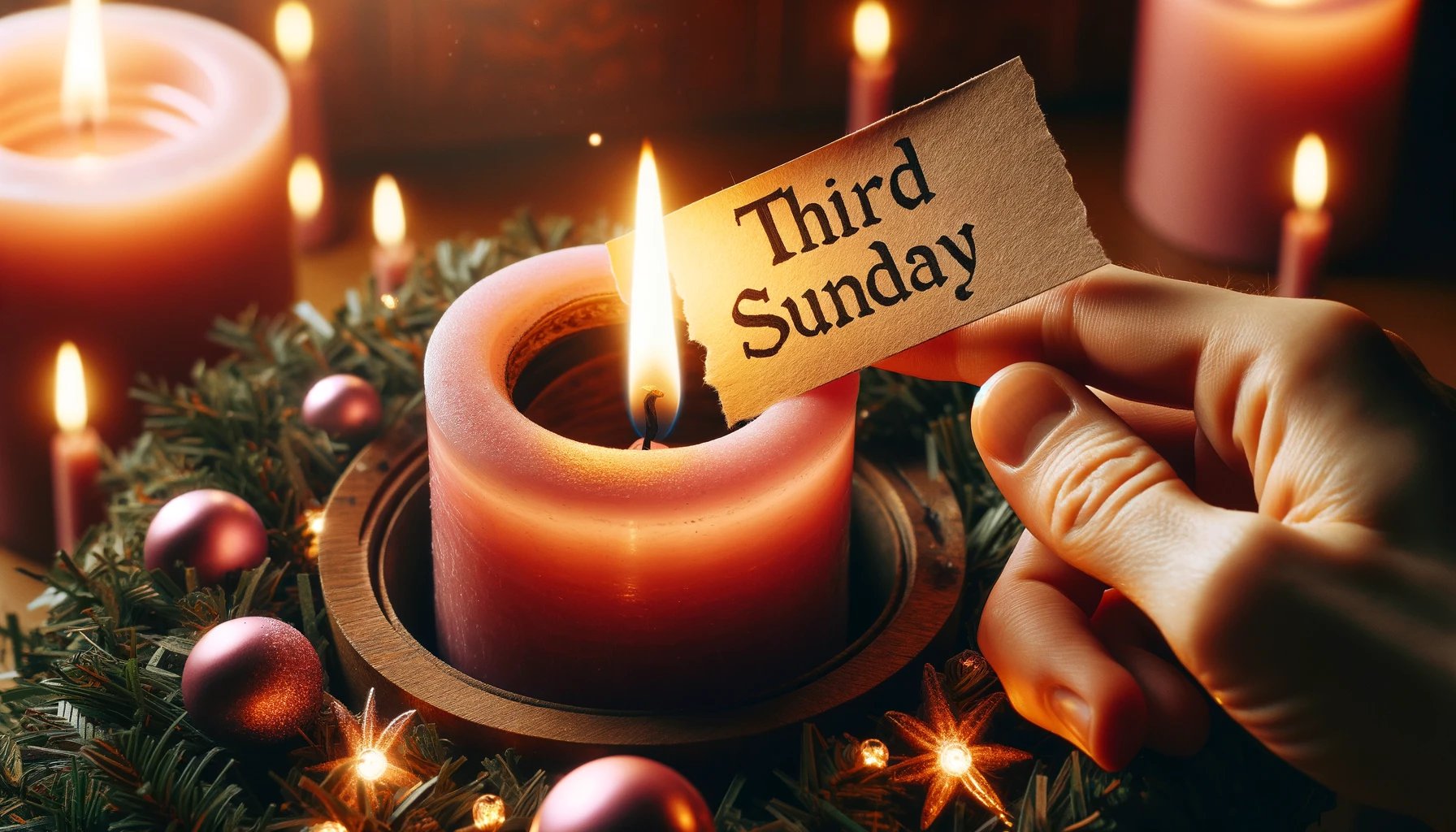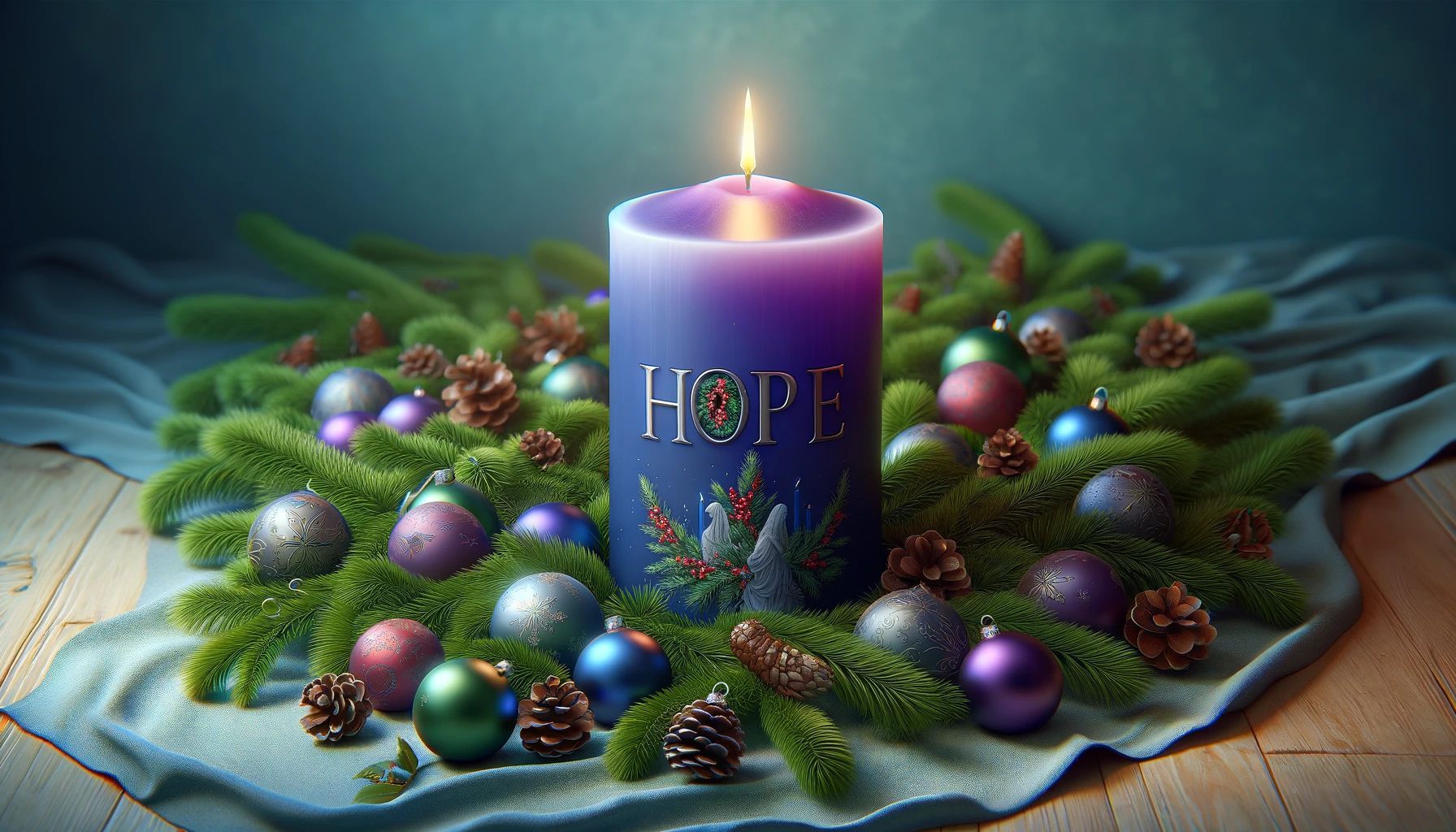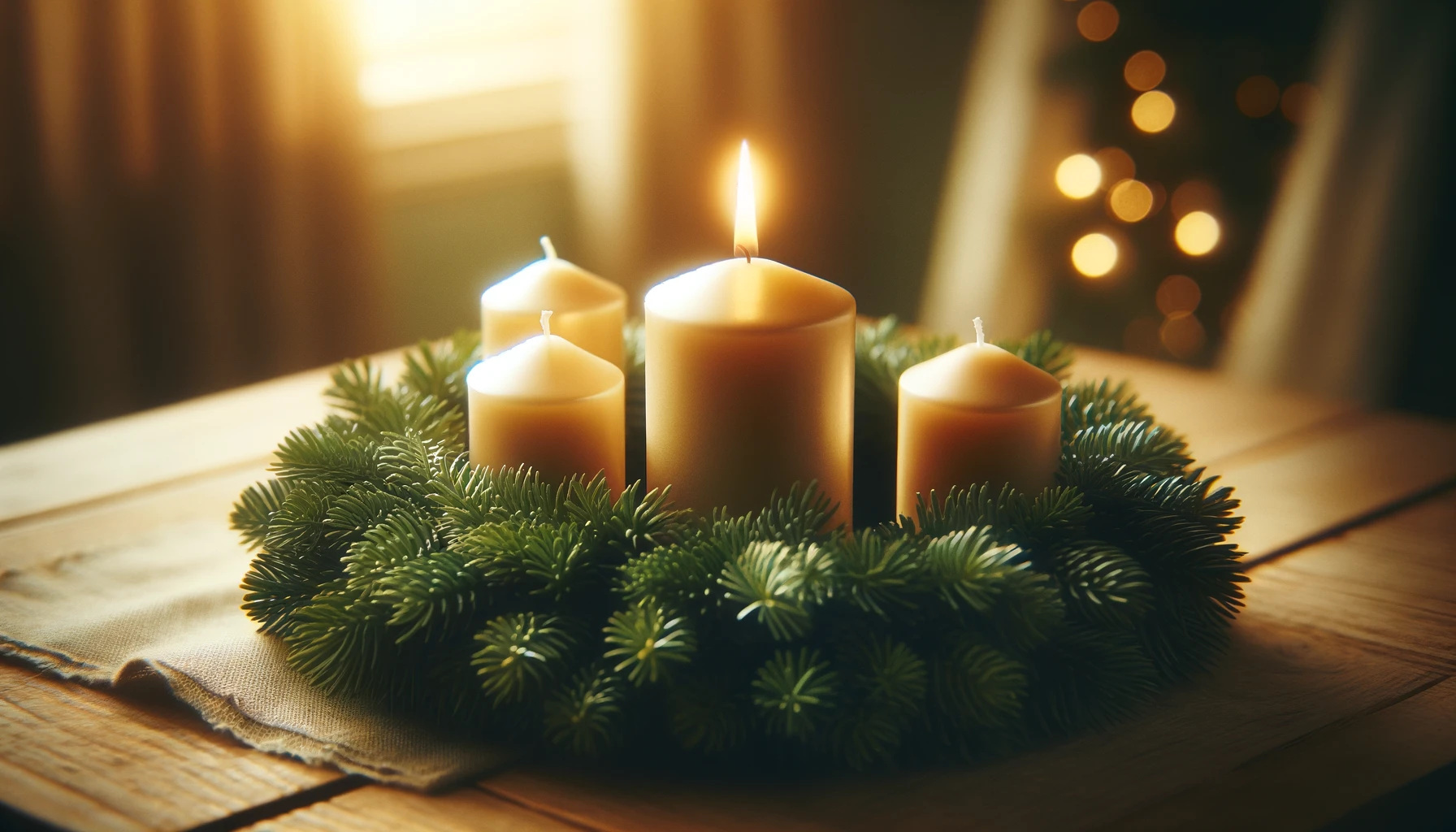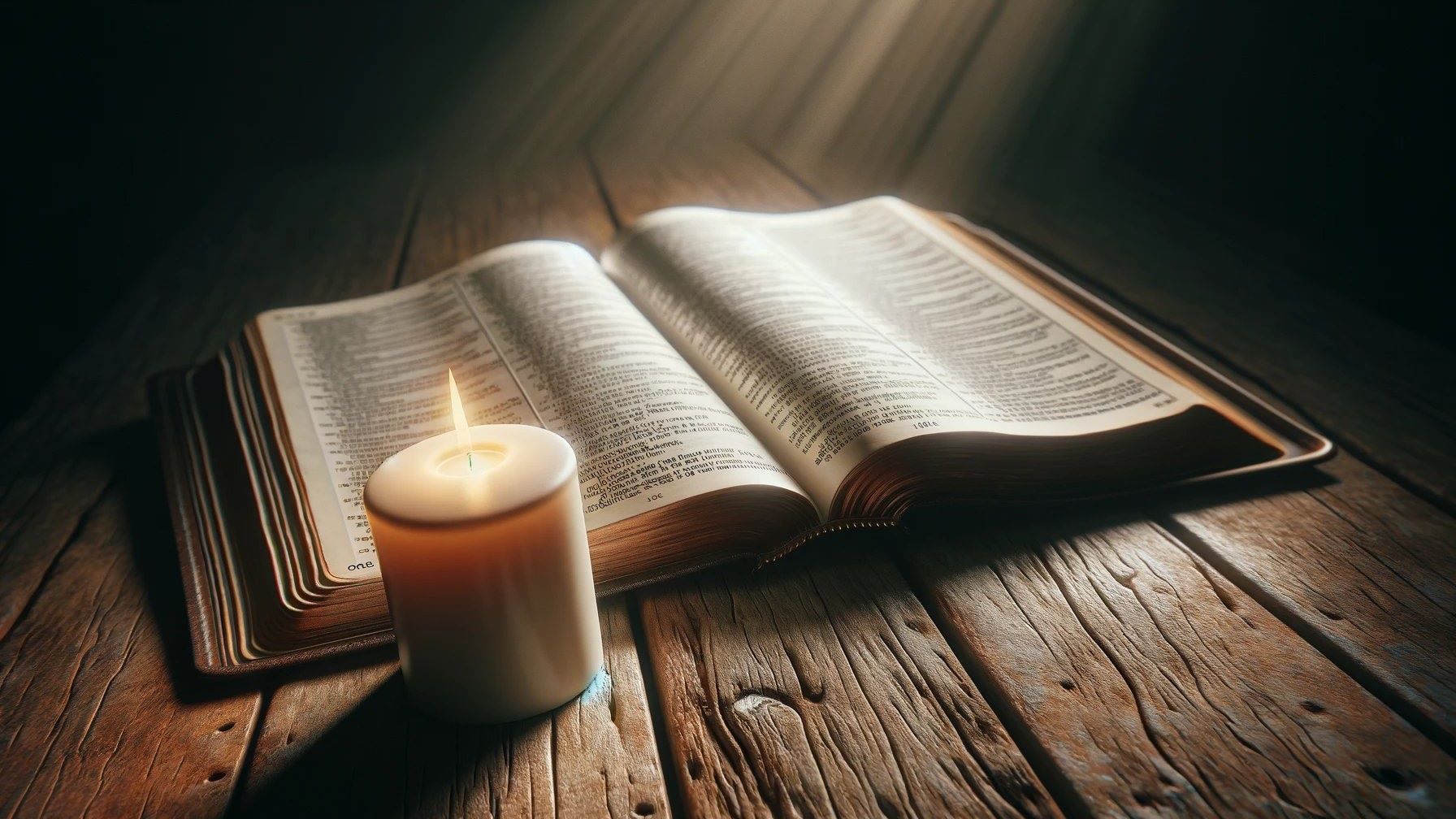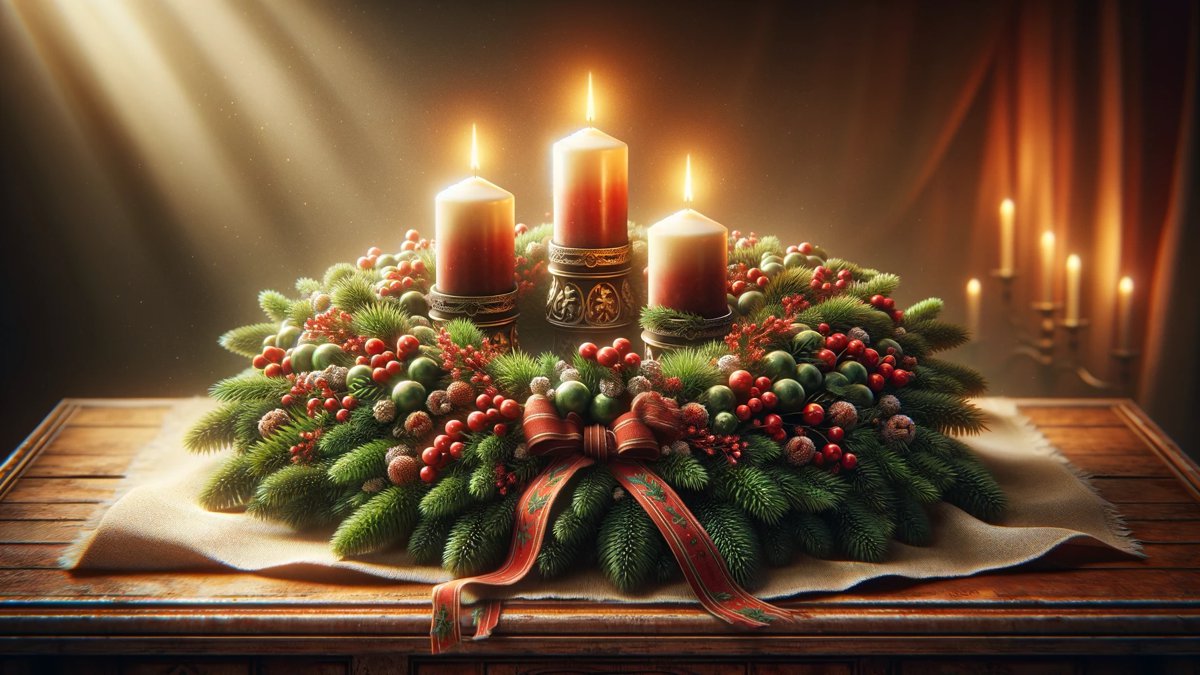Home>Special Themes>When Do You Light The First Candle Of Advent


Special Themes
When Do You Light The First Candle Of Advent
Published: February 12, 2024
Jason DeRose, Managing Editor at Christian.net, uses his expertise in religion and journalism to deepen understanding of faith's societal impacts. His editorial leadership, coupled with a strong academic background, enriches the platform’s diverse content, earning him recognition in both journalism and religious circles.
Discover the significance of lighting the first candle of Advent and the special themes associated with this tradition. Join us in celebrating the season of hope and anticipation.
(Many of the links in this article redirect to a specific reviewed product. Your purchase of these products through affiliate links helps to generate commission for Christian.net, at no extra cost. Learn more)
Table of Contents
Introduction
Advent, a word derived from the Latin "adventus," meaning "coming," marks the beginning of the liturgical year in the Christian calendar. It is a time of anticipation, preparation, and hope as believers await the celebration of the birth of Jesus Christ. The observance of Advent varies among different Christian denominations, but it generally involves a period of spiritual reflection, prayer, and joyful expectation.
During this sacred season, the lighting of the Advent wreath serves as a poignant symbol of the journey from darkness to light, representing the hope and anticipation of the coming of Christ. The tradition of lighting the Advent candles, one by one, as the weeks progress, is a cherished ritual that brings families and communities together in a spirit of unity and faith.
As we delve into the history, symbolism, and traditions associated with Advent, we will uncover the profound significance of the first candle and explore how it sets the tone for the rest of the Advent season. Additionally, we will discover meaningful ways to incorporate the observance of Advent into our homes, fostering a sense of spiritual connection and reverence during this special time of year.
Read more: Advent Prayers When Lighting The Candles
The History of Advent
The history of Advent can be traced back to the early centuries of Christianity. While the specific origins of the Advent season are not definitively documented, its roots can be found in the practices of early Christians who sought to prepare for the celebration of the birth of Jesus Christ. The concept of a period of spiritual preparation leading up to Christmas gradually evolved over time, eventually becoming an integral part of the liturgical calendar.
The earliest records of a pre-Christmas season date back to the 4th and 5th centuries in Gaul (modern-day France). During this time, Christians engaged in a period of fasting and penance in anticipation of the feast of the Nativity. This preparatory period varied in length and intensity, with practices differing among different regions and Christian communities.
By the 6th century, the observance of Advent had become more standardized, with the Roman Church prescribing a period of fasting and prayer lasting from November 11th (the feast of St. Martin) to Christmas. This period of fasting was later extended to a four-week season, marking the beginning of the liturgical year and emphasizing the themes of hope, peace, joy, and love.
The significance of Advent as a time of spiritual preparation continued to deepen throughout the Middle Ages, with the introduction of Advent hymns, prayers, and Scripture readings. The focus on the coming of Christ, not only in remembrance of his birth but also in anticipation of his second coming, became a central theme of the season.
In the 20th century, the observance of Advent experienced a revival in many Christian traditions, as congregations sought to recapture the sense of anticipation and spiritual reflection associated with the season. Today, Advent remains a cherished time for believers to pause, reflect, and prepare their hearts to celebrate the birth of Jesus Christ.
The rich history of Advent serves as a reminder of the enduring significance of this season in the Christian faith, inviting believers to embrace the timeless traditions and profound spiritual truths that have been passed down through the centuries.
The Symbolism of the Advent Wreath
The Advent wreath, with its timeless symbolism, serves as a powerful visual representation of the spiritual journey through the season of Advent. Comprised of evergreen branches and adorned with candles, the circular shape of the wreath embodies the eternal nature of God and the unending cycle of the liturgical year. The wreath's vibrant greenery signifies hope and renewal, even in the midst of winter's dormancy, while the flickering candles illuminate the path from darkness to light.
The circular form of the Advent wreath holds profound significance, representing the unending love of God and the eternal life found in Christ. As believers engage in the ritual of lighting the candles, they are reminded of the enduring hope and promise of salvation that Christ's birth brings to the world.
The four candles encircling the wreath are lit successively on each Sunday of Advent, with a fifth candle often placed in the center to be lit on Christmas Day. Each candle holds its own symbolic meaning, typically represented by the colors purple and pink. The first, second, and fourth candles are traditionally purple, symbolizing penitence and preparation, while the third candle, lit on Gaudete Sunday, is pink, signifying joy and anticipation.
The gradual illumination of the Advent candles mirrors the increasing light of Christ shining into the world, dispelling darkness and bringing forth the promise of redemption. As the weeks progress, the growing brightness of the wreath serves as a visual reminder of the approaching celebration of Christ's birth and the dawning of a new era of hope and salvation.
In addition to the candles, the evergreen branches used to construct the Advent wreath carry their own symbolism. Evergreens, which retain their color and vitality throughout the winter season, represent the enduring nature of God's love and the eternal life found in Christ. Their presence on the wreath serves as a poignant reminder of the unchanging faithfulness and constancy of God, even in the midst of life's trials and challenges.
The Advent wreath, with its rich symbolism and timeless traditions, stands as a cherished emblem of the hope, joy, and anticipation that characterize the season of Advent. As families and congregations gather around the wreath to light the candles and share in the timeless rituals, they are united in their journey of faith, eagerly awaiting the celebration of the birth of Jesus Christ.
The Tradition of Lighting the First Candle
The tradition of lighting the first candle of Advent marks the beginning of the season of anticipation and spiritual preparation. Typically, the first candle is lit on the fourth Sunday before Christmas, signifying the start of the Advent season. This initial lighting holds profound significance, as it symbolizes the hope and expectation of the coming of Christ, illuminating the path from darkness to light.
As the first candle is kindled, it serves as a beacon of hope, casting its gentle glow upon the Advent wreath and infusing the surroundings with a sense of anticipation and reverence. The act of lighting the first candle is often accompanied by prayers, hymns, and Scripture readings, creating a sacred atmosphere that invites individuals and families to pause and reflect on the profound meaning of the season.
The first candle, traditionally purple like the other candles of the Advent wreath, represents the theme of hope. This theme aligns with the prophetic anticipation of the Messiah's arrival, as foretold in the Old Testament. The lighting of the first candle serves as a poignant reminder of the hope that Christ's birth brings to the world, offering reassurance and comfort in the midst of life's challenges and uncertainties.
In many Christian traditions, the first candle is known as the "Prophet's Candle" or the "Hope Candle," drawing attention to the anticipation of the coming Messiah. As the candle is lit, believers are reminded of the enduring hope found in the promises of God, as well as the anticipation of the fulfillment of those promises through the birth of Jesus Christ.
The tradition of lighting the first candle of Advent not only sets the tone for the weeks to come but also fosters a sense of unity and spiritual connection within families and communities. As the candle's flame is kindled, it serves as a symbol of faith and expectation, inspiring individuals to embrace the hope and joy that characterize the Advent season.
In essence, the tradition of lighting the first candle of Advent embodies the timeless themes of hope, anticipation, and spiritual preparation, inviting believers to embark on a journey of reflection and expectation as they eagerly await the celebration of the birth of Jesus Christ.
The Meaning of the First Candle
The first candle of the Advent wreath holds profound symbolism, representing the theme of hope as believers embark on the spiritual journey of Advent. This candle, often referred to as the "Prophet's Candle" or the "Hope Candle," serves as a poignant reminder of the anticipation and expectation surrounding the coming of the Messiah.
As the first candle is lit on the Advent wreath, it illuminates the path from darkness to light, symbolizing the hope that Christ's birth brings to the world. The color of the candle, typically purple, aligns with the penitential nature of the season, emphasizing the themes of preparation and spiritual reflection.
The significance of the first candle is deeply rooted in the Old Testament prophecies that foretold the coming of a savior. The prophets, through their inspired words, kindled a sense of hope and expectation among the people of Israel, pointing toward the fulfillment of God's promises. As believers light the first candle, they are reminded of the enduring hope found in the prophecies of old, as well as the anticipation of the fulfillment of those prophecies through the birth of Jesus Christ.
The lighting of the first candle also serves as a call to embrace the hope that transcends the challenges and uncertainties of life. It invites believers to reflect on the promises of God and the assurance that He is faithful to fulfill His word. The gentle flicker of the first candle's flame symbolizes the enduring light of hope that shines brightly in the midst of darkness, offering solace and encouragement to all who behold it.
Furthermore, the first candle sets the tone for the subsequent weeks of Advent, laying a foundation of hope upon which the themes of peace, joy, and love will unfold. It serves as a reminder that the arrival of Christ brings a renewed sense of hope to a world longing for redemption and restoration.
In essence, the first candle of Advent embodies the timeless message of hope, inviting believers to embrace the anticipation and expectation of the coming Messiah. As the flame of the first candle dances upon the Advent wreath, it ignites the hearts of believers with the promise of a brighter tomorrow, infusing the season with a sense of hope that transcends time and circumstance.
Read more: How To Light The Advent Candles
How to Celebrate Advent at Home
Celebrating Advent at home provides a meaningful opportunity for individuals and families to engage in the rich traditions and spiritual practices that characterize this sacred season. Here are some thoughtful ways to observe Advent within the comfort of your home:
-
Create an Advent Wreath: Craft or purchase an Advent wreath to serve as a focal point for your observance. Assemble the wreath with evergreen branches and place four candles around the circumference, with a fifth candle in the center. This symbolic centerpiece will serve as a visual reminder of the journey from darkness to light throughout the season.
-
Light the Advent Candles: Set aside time each Sunday of Advent to gather around the wreath and light the corresponding candle, beginning with the first candle of hope. Engage in prayers, Scripture readings, and hymns that reflect the theme of each week, fostering a sense of reverence and anticipation.
-
Advent Devotions: Incorporate daily devotions into your routine, using Advent-themed readings and reflections to guide your spiritual preparation. This can be done individually or as a family, creating a space for shared contemplation and discussion.
-
Advent Calendars: Utilize Advent calendars as a way to count down the days leading up to Christmas. Whether traditional paper calendars with doors to open or digital versions, these calendars provide a tangible way to mark the progression of the season and build excitement for the celebration of Christ's birth.
-
Acts of Kindness: Embrace the spirit of giving and compassion by engaging in acts of kindness and generosity throughout Advent. This can include volunteering, donating to charitable causes, or simply reaching out to those in need within your community.
-
Decorate with Purpose: Infuse your home with meaningful decorations that reflect the themes of Advent. Incorporate symbols of hope, peace, joy, and love into your decor, creating a visual representation of the season's spiritual significance.
-
Family Traditions: Establish and uphold cherished family traditions that are unique to the Advent season. Whether it's baking special treats, engaging in Advent-themed crafts, or participating in a family Advent prayer service, these traditions foster a sense of togetherness and spiritual connection.
By embracing these practices, individuals and families can cultivate a sense of reverence, anticipation, and unity as they journey through the Advent season within the warmth and familiarity of their homes. Through intentional observance and meaningful traditions, the home becomes a sacred space where the timeless themes of hope, peace, joy, and love are celebrated and cherished.
Conclusion
As we conclude our exploration of Advent, we are reminded of the profound significance of this sacred season in the Christian calendar. The journey from the anticipation of the Messiah's arrival to the joyous celebration of Christ's birth is encapsulated in the timeless traditions and symbolism of Advent. From the rich history of the season to the cherished rituals of lighting the Advent candles, the essence of Advent resonates deeply with believers, inviting them to embrace hope, peace, joy, and love.
The Advent wreath, with its evergreen branches and flickering candles, stands as a powerful emblem of the spiritual pilgrimage through the season. The circular form of the wreath symbolizes the eternal nature of God and the unending cycle of the liturgical year, while the gradual illumination of the candles reflects the increasing light of Christ shining into the world. Each candle, with its unique symbolism, contributes to the overarching narrative of the season, culminating in the celebration of the birth of Jesus Christ.
The tradition of lighting the first candle of Advent serves as a poignant commencement of the season, igniting the flame of hope and anticipation in the hearts of believers. As the first candle is kindled, it sets the tone for the weeks to come, fostering a sense of unity and spiritual connection within families and communities. The theme of hope embodied by the first candle resonates deeply with the prophetic anticipation of the Messiah's arrival, inviting believers to embrace the enduring hope found in the promises of God.
Furthermore, celebrating Advent at home provides a nurturing environment for individuals and families to engage in meaningful traditions and spiritual practices. From crafting an Advent wreath to incorporating daily devotions and acts of kindness, the home becomes a sacred space where the timeless themes of Advent are embraced and celebrated.
As we immerse ourselves in the observance of Advent, we are reminded of the timeless truths and profound spiritual significance that underpin this season of anticipation and hope. The journey from the first candle to the culmination of Christmas Day is a testament to the enduring faith, joy, and love that Christ's birth brings to the world. May the traditions and symbolism of Advent continue to inspire and uplift believers as they embark on this spiritual pilgrimage year after year.
